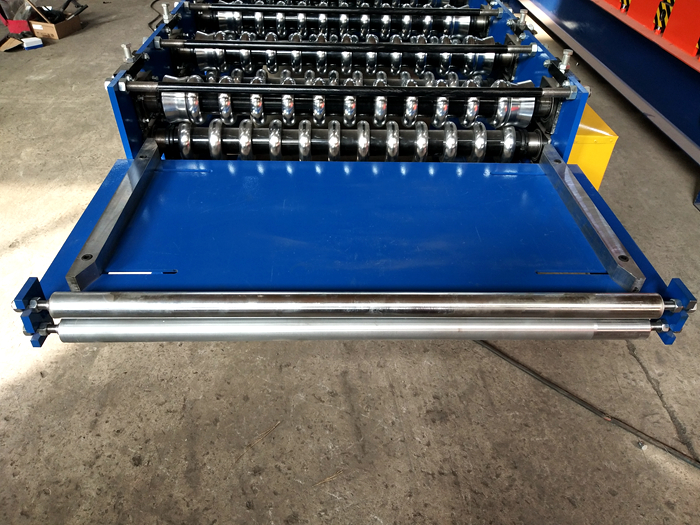Advanced Solutions for Standing Seam Roofing Machine Production and Installation Techniques
Understanding Standing Seam Roofing Machines
Standing seam roofing has become increasingly popular due to its durability, energy efficiency, and aesthetic appeal. Central to the installation of this roofing system is the standing seam roofing machine, which automates the process of forming and attaching metal panels to roofs. This article delves into the workings, benefits, and considerations of standing seam roofing machines.
What are Standing Seam Roofing Machines?
Standing seam roofing machines are specialized tools designed to create metal panels with raised seams that interlock vertically. These seams are typically at least 1 inch high, allowing for expansion and contraction due to temperature changes. The machine's primary function is to either manufacture the metal panels on-site or to prepare pre-made panels for installation.
The standing seam roofing machines come in various configurations, including portable models for on-site fabrication and stationary systems for larger-scale production. Some machines can even be custom-made to meet specific project requirements, making them versatile for contractors and roofers.
How Do Standing Seam Roofing Machines Work?
These machines utilize a series of rollers to shape metal sheets into the desired panel form. The process begins with loading a roll of metal coil into the machine, which feeds through rollers that gradually mold it into standing seam panels. The machine's design allows for consistent dimensions and accurate seams, ensuring a perfect fit when installed.
Once the panels are formed, the roofing machine often includes features to crimp, seam, or weld the edges, creating a watertight seal. This level of precision reduces the risk of leaks and enhances the roof's overall lifespan. The efficiency of these machines significantly cuts down the labor required, allowing roofers to complete projects faster and more reliably.
Advantages of Using Standing Seam Roofing Machines
1. Efficiency and Speed Standing seam roofing machines significantly speed up the installation process. By reducing manual labor and increasing precision, contractors can take on more projects within a given timeframe.
standing seam roofing machine

2. Quality Control These machines produce panels to exact specifications, ensuring high-quality output that meets industry standards. Consistency in panel dimensions minimizes installation issues and enhances overall roof performance.
3. Versatility With the ability to create various panel sizes and styles, standing seam roofing machines cater to a wide range of architectural requirements. This flexibility makes it easier for contractors to meet diverse customer needs.
4. Cost-Effectiveness While the initial investment in a roofing machine may be high, the long-term savings in labor costs and materials can outweigh these upfront expenses. Efficient production means fewer wasted resources and minimized project timelines.
5. Enhanced Durability The seamless nature of standing seam roofs contributes to their longevity. When panels are produced and installed correctly, they can withstand severe weather conditions, ensuring a sturdy and reliable roofing solution.
Considerations When Purchasing a Standing Seam Roofing Machine
When looking to invest in a standing seam roofing machine, several factors should be considered
- Machine Capacity Evaluate the production capacity that meets your business needs. Consider the types of projects you typically handle and whether you require a portable machine for job sites. - Features and Technology Look for machines that offer advanced features like programmable controls, automatic feed systems, and customizable panel designs to enhance productivity.
- Training and Support Ensure that the manufacturer provides adequate training and ongoing support to maximize the machine's potential and reduce downtime.
- Budget and ROI Balance your budget with the potential return on investment. Analyze the savings in labor costs and the potential to take on more projects.
In conclusion, standing seam roofing machines are a vital investment for contractors looking to enhance their efficiency and quality in roofing installation. With the right machine, builders can produce durable, high-quality roofing solutions that stand the test of time, creating satisfied customers and a thriving business.
-
Roof Panel Machines: Buying Guide, Types, and PricingNewsJul.04, 2025
-
Purlin Machines: Types, Features, and Pricing GuideNewsJul.04, 2025
-
Metal Embossing Machines: Types, Applications, and Buying GuideNewsJul.04, 2025
-
Gutter Machines: Features, Types, and Cost BreakdownNewsJul.04, 2025
-
Cut to Length Line: Overview, Equipment, and Buying GuideNewsJul.04, 2025
-
Auto Stacker: Features, Applications, and Cost BreakdownNewsJul.04, 2025
-
Top Drywall Profile Machine Models for SaleNewsJun.05, 2025








